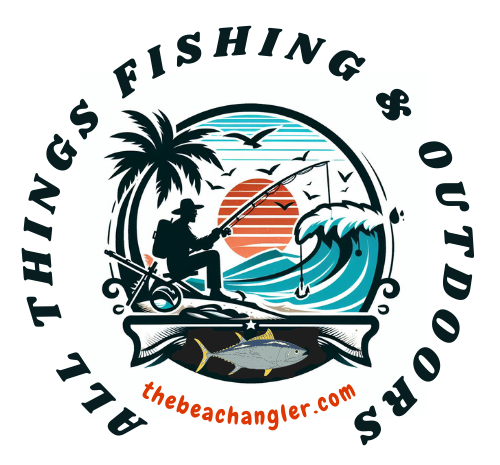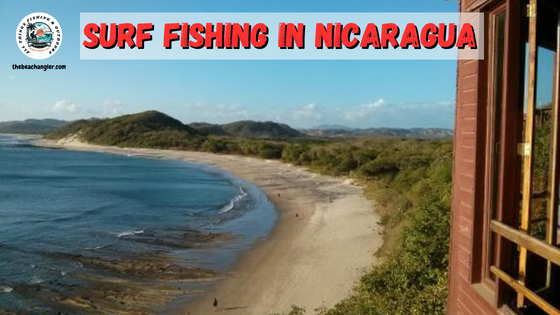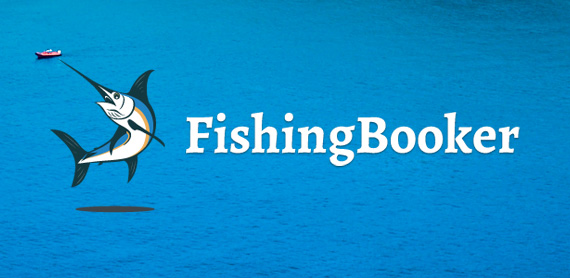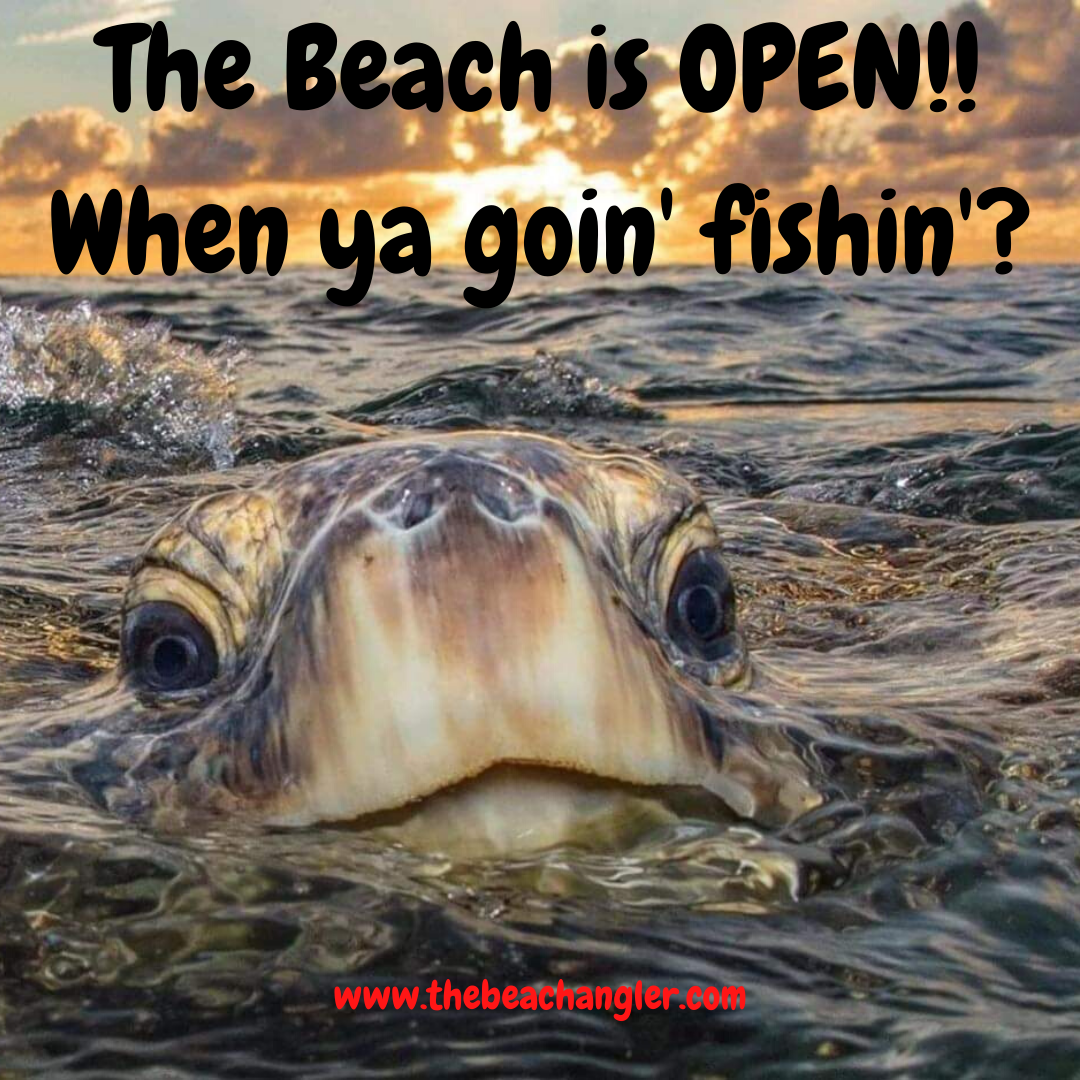My passion for surf fishing led me to search out beaches and coastlines the world over looking for new surf fishing adventures. Surf fishing in Nicaragua should be on every serious surf fisherman’s list of destinations. The Central American country of Nicaragua is a hidden gem for surf anglers and has carved out a niche for itself among the surf fishing community, with its sprawling beaches and abundant marine life.
QUICK LOOK:
With coasts on both the Caribbean Sea and the Pacific Ocean, Nicaragua has a wide variety of surf fishing opportunities and numerous fish species to pursue. Most of the more popular destinations are along the Pacific coast but, don’t overlook the less crowded, more laid-back Caribbean coast. And, while you’re there, check out some of the other sights, attractions, and unique cultures of this beautiful Central American country.
Nicaragua’s Pacific coast teems with a rich variety of fish and breathtaking scenery. You’ll find the waters here home to roosterfish, snook, and Spanish mackerel, to name a few. Beyond the catch itself, surf fishing here is a chance to connect with nature and the local way of life, and you’ll find the people of Nicaragua to be some of the most friendly in the world.
While the country welcomes visitors year-round, the surf fishing seasons are something to keep in mind. The dry season between November and April, known as ‘Verano,’ offers calmer tides and clearer waters, ideal for beginners.
Conversely, the rainy season or ‘invierno’ running from May to October brings larger swells and, while fishing can still be great, the rougher surf and currents make it more hazardous. I can assure you, that whether you are a seasoned angler or just starting, Nicaragua’s shores will not disappoint.
How to Get There Travel Tips and Requirements for Nicaragua
Traveling to Nicaragua for a surf fishing adventure requires preparation. I’ll share essential tips and must-know requirements to help you plan a hassle-free trip.
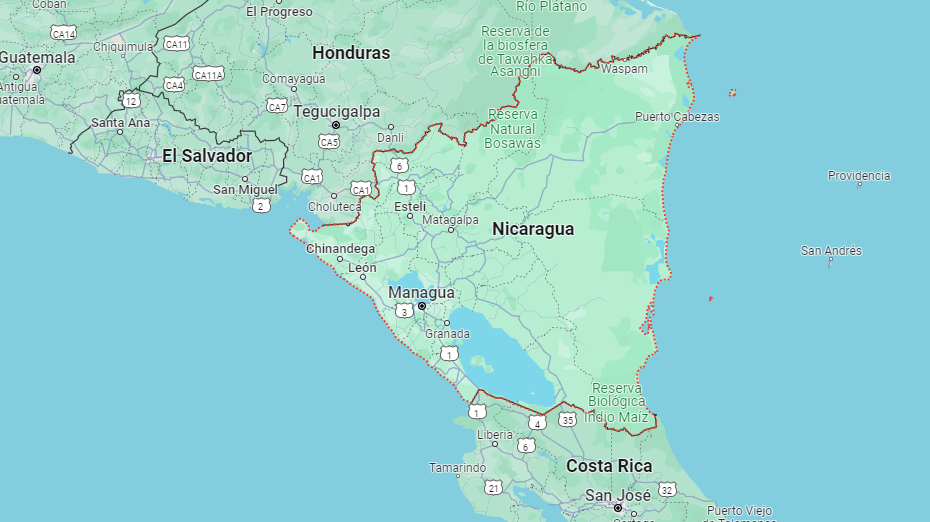
First, check your passport’s validity; it should be valid for at least six months after your planned departure from Nicaragua. Upon entry, many nationalities can obtain a tourist visa upon arrival, but always verify current regulations for your specific country before departure.
Stay on top of health recommendations. Ensure your routine vaccinations are up-to-date, and consider additional ones like Yellow Fever, Typhoid, and Hepatitis A and B, based upon the latest health advice for travelers to Nicaragua. As of July 2023, Nicaragua has lifted COVID-19 travel restrictions so you no longer need to be vaccinated for COVID-19 or present a negative COVID test to enter the country.
Local Nicaragua Fishing information:
Safety is paramount. While Nicaragua is known for its warm hospitality, it’s smart to take precautions. It is a different country and they have different laws and rules. Use established transportation services, be aware of your surroundings, and avoid displaying expensive equipment or jewelry openly.
Lastly, embrace local customs and the Spanish language to enrich your experience. Basic Spanish goes a long way in showing respect and navigating everyday interactions. Nicaraguans appreciate when visitors engage with their culture and traditions.
With these travel tips in your back pocket, you’re well on your way to enjoying the rich surf fishing destinations of Nicaragua. Of course, to make the most out of your surf fishing exploits, you’ll need to prepare yourself with the necessary gear and knowledge for a successful trip.
Essential Gear for Surf Fishing in Nicaragua
Before you can enjoy the thrill of surf fishing in Nicaragua, you need the right gear. The country’s coastline brims with fish, but as I’ve learned, using appropriate equipment is crucial for success. To ensure you’re prepared, let’s take a look at the basic gear you should have on hand.
A durable, corrosion-resistant rod and reel combo should top your list. A 7-9 foot spinning combo if you will be tossing artificials in the surf. And, a 10-12 heavy action conventional or spinning combo if you will be fishing the bottom with baits.
The salty air and water can wreak havoc on lesser-quality gear, so invest wisely. Look for a medium to heavy action rod to withstand the robust waves and corrosive marine environment. Pair it with a high-capacity reel designed for saltwater fishing and a good 30lb class braided line.
Next, add a selection of lures, hooks, weights, and rigs to your tackle box. Seek advice from local anglers or shops on what’s biting and what they’re biting on, as these details can change with the seasons. An array of spoons, poppers, and soft plastic baits should have you covered for most scenarios.
Don’t forget line and leader material that can handle the abrasive nature of your sandy environment. A mix of monofilament and braided lines is often recommended, braid for providing strength and sensitivity, and monofilament for its shock-absorbing stretch and low visibility.
You might prefer to travel light and rent equipment upon arrival. Several stores in major coastal towns and near popular fishing spots provide rental services. They usually offer gear that’s tried and tested for local conditions.
Essential Surf Fishing Gear:
- Surf Fishing Rods, surf rods are typically longer and heavier duty than standard rods. – read more.
- Surf fishing Reels,larger and stronger with greater line capacity to handle big fish. – read more.
- Surf fishing Rod and Reel Combos, pre-matched rod and reel set ups for surf fishing – read more.
- Sand Spike Rod holder, holds your rods securely while you wait for that big bite. – read more.
- Surf Fishing Rigs, terminal tackle for fishing the surf. – read more.
- Surf fishing Carts, for beaches that won’t allow vehicles you need a way to carry your gear – read more.
- Rod Racks for Vehicles, carry your rods out of harms way and easy to access- read more.
- Beach Camping Gear, in case you want to fish all night or for several days – read more.
Or, if you plan to frequently visit or stay for an extended period, consider purchasing your equipment from the same local shops when you get there.
Of course, another option is to book a guided surf fishing trip where the guide will provide all of the necessary tackle and gear.
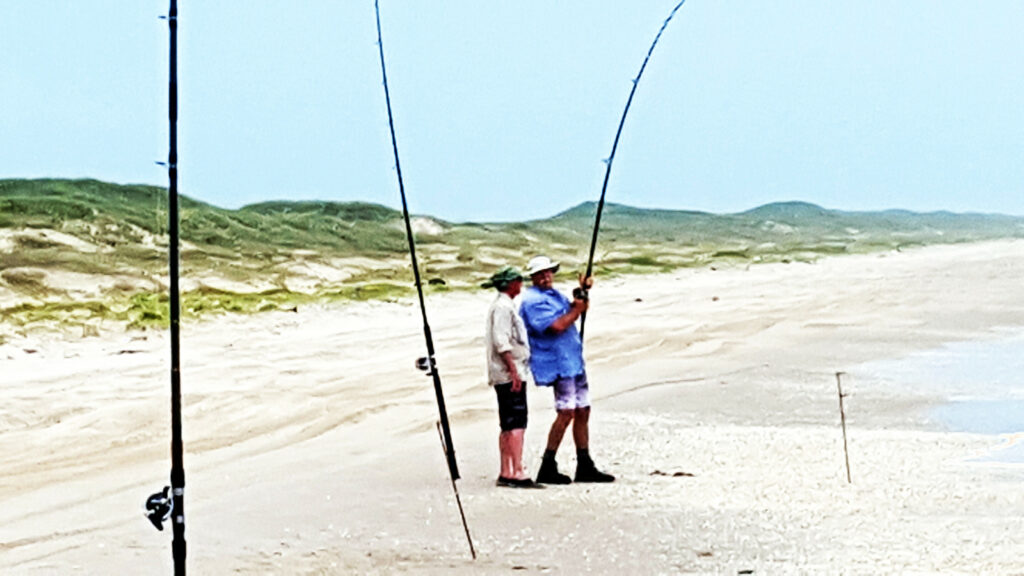
Regardless of rental or purchase, supporting these local businesses helps boost the Nicaraguan economy and the communities you’ll grow to love.
Equipped with the right gear and knowledge, you’re almost ready to hit the beaches. But having the gear is only part of the equation; you need to decide on what beaches you want to fish.
Best Spots for Surf Fishing Nicaragua
Nicaragua offers some fantastic surf fishing spots along its Pacific coastline. Here are some of the best and most popular locations:
- San Juan del Sur: This popular beach town offers great surf fishing opportunities. You can fish from the shore for big roosterfish or hire a boat for deeper waters.
- Popoyo: Known for its consistent waves, Popoyo is also a great spot for surf fishing. The rocky points and sandy beaches provide varied fishing environments.
- Playa Maderas: Just north of San Juan del Sur, Playa Maderas is another excellent surf fishing destination. Its pristine beaches and rocky outcrops attract a variety of fish species.
- Playa Gigante: This quiet fishing village has excellent surf fishing options. You can cast your line from the beach or explore nearby rocky areas.
- Playa Colorado: Accessible only by boat or through a gated community, Playa Colorado offers secluded surf fishing experiences. The remote location ensures less fishing pressure and potentially bigger catches.
- El Transito: A laid-back beach town with good surf fishing opportunities. Its long stretches of sandy beaches are ideal for casting lines into the surf.
- Corn Islands: The blue waters around the Corn Islands are not only perfect for swimming and diving, but they also offer great flats, surf, and offshore fishing opportunities.
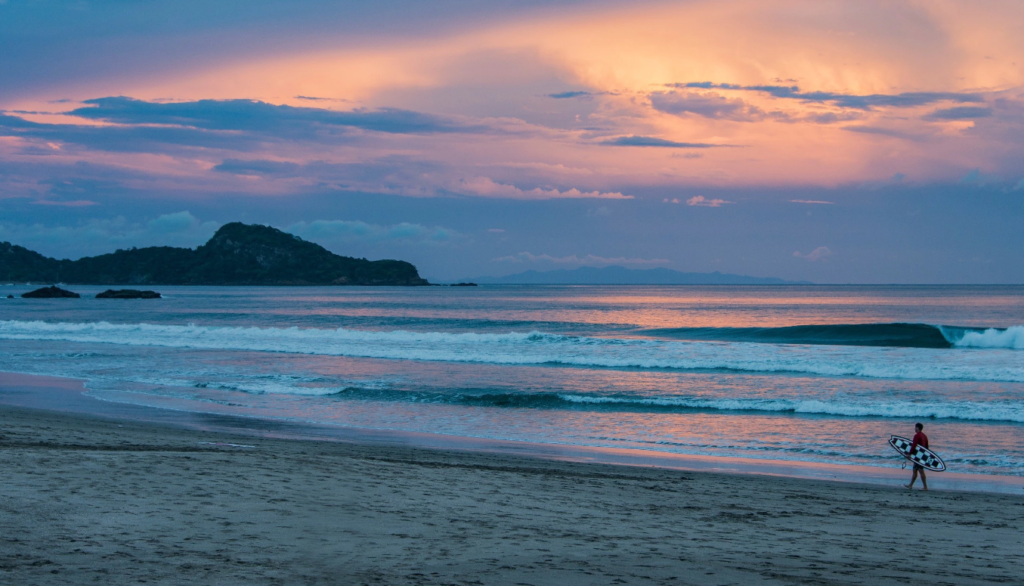
The best time to fish is the dry season between November and April. This period usually offers the best conditions for surf fishing. Remember to check local regulations and obtain any necessary permits before fishing in Nicaragua.
Additionally, consider hiring a local guide who can provide valuable insights into the best fishing spots and techniques, as well as provide all the bait and gear you need.
What Can You Catch When Surf Fishing Nicaragua
When surf fishing in Nicaragua, anglers can expect to catch a variety of fish species. Some common catches include:
Roosterfish: Known for their distinctive dorsal fin resembling a rooster’s comb, roosterfish are prized gamefish in Nicaragua’s surf. They are known for their strong fights and can be found patrolling the coastal waters.
Snook: Snook are another popular target for surf anglers in Nicaragua. These predatory fish are often found near structure such as rocks, jetties, and mangroves. They are known for their aggressive strikes and powerful runs.
Snapper: Several species of snapper, including cubera snapper and mutton snapper, inhabit the waters along Nicaragua’s coastline. They can be caught using a variety of baits and lures and are prized for their delicious flesh.
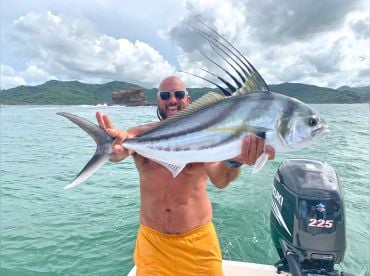
Jack Crevalle: Jack Crevalle are aggressive predators commonly found in the surf zone. They are known for their powerful runs and can provide exciting action for anglers targeting them from the shore.
Grouper: Various species of grouper inhabit the rocky reefs and underwater structures along Nicaragua’s coast. These bottom-dwelling fish are often targeted using live bait or lures and can provide a thrilling fight for anglers.
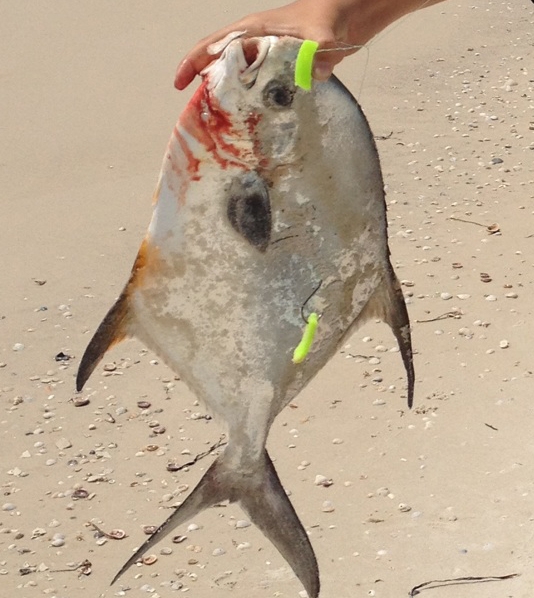
Tarpon: While not as common in the surf as in estuarine or river environments, tarpon can still be encountered by surf anglers in Nicaragua. These iconic fish are known for their acrobatic leaps and formidable strength.
Mackerel and Bonito: These fast-swimming pelagic fish are commonly found in the surf zone, especially during times of baitfish abundance. They provide exciting action for anglers targeting them with lures or live bait.
Various Species of Pompano: Pompano are frequently caught by surf anglers in Nicaragua. These silvery fish are known for their delicious flesh and can be caught using sand fleas, shrimp, or artificial lures.
These are just a few examples of the many fish species that anglers can expect to encounter while surf fishing in Nicaragua. The diversity of species and the thrill of the chase make Nicaragua’s surf fishing a rewarding experience for anglers of all skill levels.
Tips and Techniques for Successful Surf Fishing in Nicaragua
Nicaragua’s coastlines are teeming with a variety of fish, making it an intriguing spot for surf fishing enthusiasts. The thrill of reeling in your catch from the mighty Pacific or the serene Caribbean cannot be overstated. However, success isn’t just a matter of luck; it demands skill, patience, and local knowledge.
When choosing a surf fishing destination in Nicaragua, conducting a bit of research on local fish species before you hit the shoreline is a smart move. Some of the popular species include roosterfish, snook, and tarpon.
Choosing the right bait is essential – live bait like mullet, shrimp, or sand crabs can be particularly effective for many species in these waters. Pay attention to what local anglers are using; often, their choices are based on years of experience and understanding of the local environment.
Mastering the technique for casting from the shore, or while wading the surf, is an important skill to master if you expect to have success. It’s all about precision and reading the waves to find the right timing.
Beginners may find it helpful to practice their casting technique before they arrive or consider a lesson with a local expert to get started on the right foot. Additionally, understanding the tide schedule can give you an advantage.
Tidal movements create currents and moving water that push bait along the bottom to waiting predators. High tide brings fish closer to shore and within easier casting distance. But moving water, in, out, or parallel to the shore, it doesn’t matter as long as it’s moving.
Catch and release is an important practice in Nicaragua, particularly for maintaining the ecological balance and ensuring the sustainability of fish populations. Familiarize yourself with local regulations and ethical practices.
If you’re unsure, don’t hesitate to ask local fishermen or guides. The people of Nicaragua are very friendly and helpful. Remember, beyond your catches and the scenery, it’s the experience of surf fishing in Nicaragua that will stay with you.
Exploring Nicaragua’s Other Attractions and Activities
Nicaragua is more than just a haven for surf fishing enthusiasts; it offers a wealth of cultural and adventurous activities that complement any surf fishing itinerary. Whether you’re looking to immerse yourself in history, indulge in local flavors, or get your adrenaline pumping, there’s something for everyone.
History buffs will find themselves drawn to the colonial cities of Granada and León, where cobblestone streets, centuries-old cathedrals, and vibrant markets await.
Take a guided tour to learn about the rich history of these cities, or simply wander the streets and absorb the atmosphere.
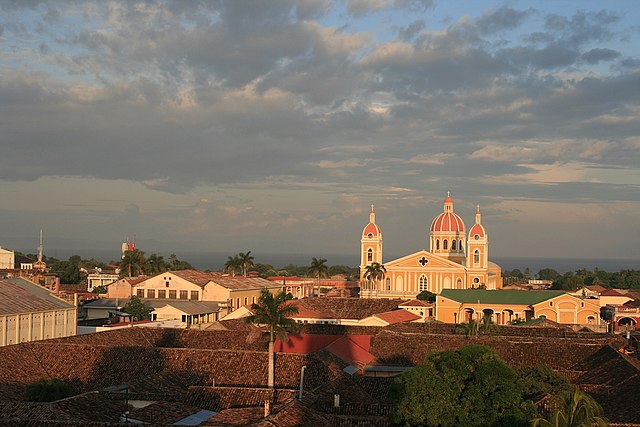
Adventure seekers might gravitate towards the volcanoes scattered across Nicaragua. You can hike up to the crater of Masaya Volcano, or for the more daring, sandboard down the slopes of Cerro Negro. Don’t forget to visit the stunning freshwater lakes, like Apoyo Lagoon, where you can swim, kayak, or paddleboard in placid waters surrounded by tropical forests.
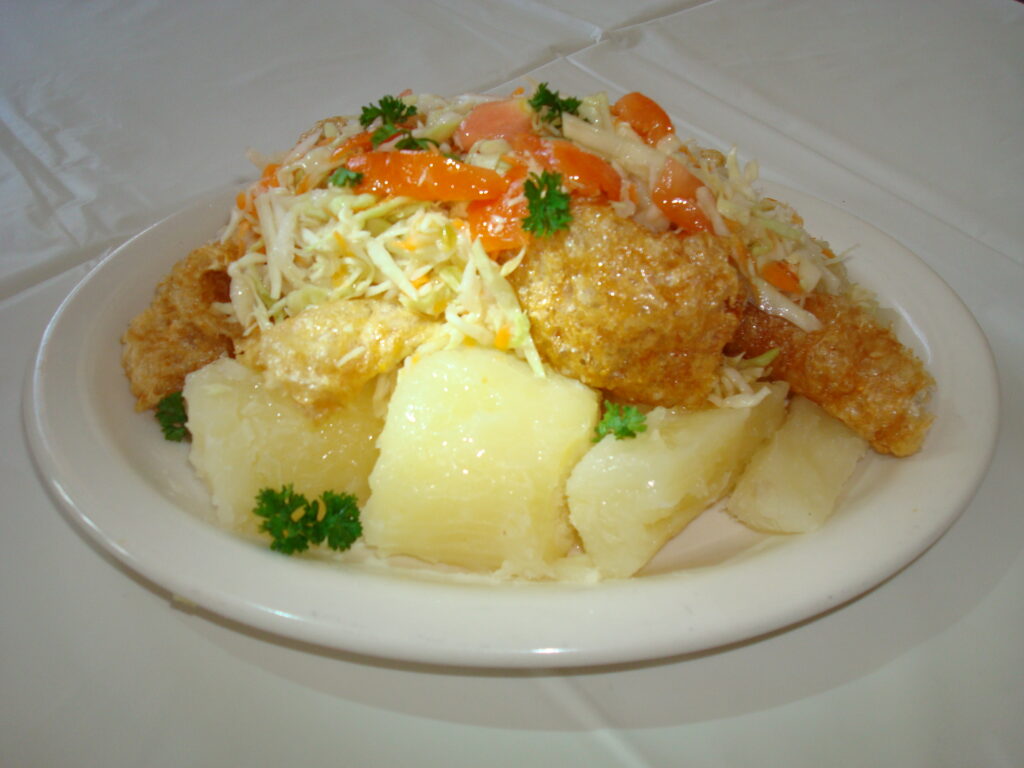
Nicaragua’s local cuisine is a blend of indigenous and Spanish influences, providing a tasty exploration for your palate.
Be sure to try vigorón, a traditional dish made of yucca, cabbage salad, and fried pork rinds, or gallo pinto, a staple made from rice and beans.
Coastal areas offer fresh seafood that’s often caught daily, giving you a taste of the ocean’s bounty and traditional recipes.
After a day of fishing or exploring, consider visiting one of the many wellness retreats. Nicaragua’s laid-back vibe is perfect for yoga, meditation, or simply unwinding with a Nicaraguan coffee in hand, as you plan the next day’s adventures.
Nicaragua Cast and Blast Adventures:
Another great opportunity for adventure in Nicaragua is the outstanding wing shooting for ducks and doves. You’ve probably heard about the fantastic dove hunting in Argentina, but you probably didn’t know that Nicaragua offers some of the world’s best dove and duck hunting.
You can book a combo “Cast and Blast” vacation with 5-star accommodations, guided fishing excursions, and unforgettable dove and duck hunting that will leave you with a sore shoulder and a lifetime of great memories. Check out the folks at Nicaragua Bird Hunting Adventures for packages and prices.
As you can see, Nicaragua offers a wide variety of sights, sounds, destinations, and attractions for anglers, or non-anglers, making it a great family vacation destination.
Frequently Asked Questions About Surf Fishing Nicaragua

What types of fish can I catch while surf fishing in Nicaragua?
Nicaragua’s Pacific coast offers a variety of fish species including roosterfish, snook, snapper, jacks, grouper, and tarpon among others.
When is the best time of year for surf fishing in Nicaragua?
The best time for surf fishing in Nicaragua is typically during the dry season, which runs from November to April. However, fishing can still be good during the wet season, especially in the early mornings or late afternoons.
Do I need a fishing license to surf fish in Nicaragua?
Yes, you do need a fishing license to surf fish in Nicaragua. Licenses can be obtained from local authorities or through authorized vendors. Make sure to have your license with you while fishing to avoid any fines or penalties.
What equipment do I need for surf fishing in Nicaragua?
Essential equipment includes a surf rod (9 to 12 feet in length), a sturdy spinning reel, a variety of lures and bait (such as spoons, jigs, and live bait), a tackle box, sunscreen, polarized sunglasses, and a cooler to store your catch.
Are there any dangerous marine animals I should be aware of while surf fishing in Nicaragua?
While surf fishing in Nicaragua, be cautious of stingrays, jellyfish, and certain species of sharks. Always shuffle your feet when wading in shallow waters to avoid stepping on stingrays.
Can I practice catch-and-release while surf fishing in Nicaragua?
Yes, catch-and-release fishing is encouraged to help preserve fish populations. However, if you plan to keep some fish for consumption, be sure to adhere to local size and bag limits.
Are there any specific regulations or restrictions I need to know about when surf fishing in Nicaragua?
Yes, it’s important to familiarize yourself with local fishing regulations and restrictions, including size limits, bag limits, and designated no-fishing zones. Violating these regulations can result in fines or other penalties.
Is it safe to fish alone, or should I hire a guide while surf fishing in Nicaragua?
While it’s possible to fish alone, hiring a local guide can enhance your fishing experience by providing insider knowledge of the best spots, techniques, and safety tips. Additionally, a guide can help navigate any language barriers and ensure compliance with local regulations.
Final Thoughts on Surf Fishing Nicaragua
I hope this guide has given you a solid grasp of what to expect when you plan your surf fishing adventure in Nicaragua. It’s a beautiful country with a lot to offer beyond its shores, and I’m glad you’re considering it for your next outdoor excursion.
By covering the essentials from travel prep to the ins and outs of surf fishing in this stunning country, I trust you’re more equipped and enthused about casting your line into the Pacific’s rich waters.
Use this article as your starting point, do more research if necessary, and remember to embrace the unexpected. Every fishing trip writes its own story, and Nicaragua’s vibrant coastline has countless tales to tell.
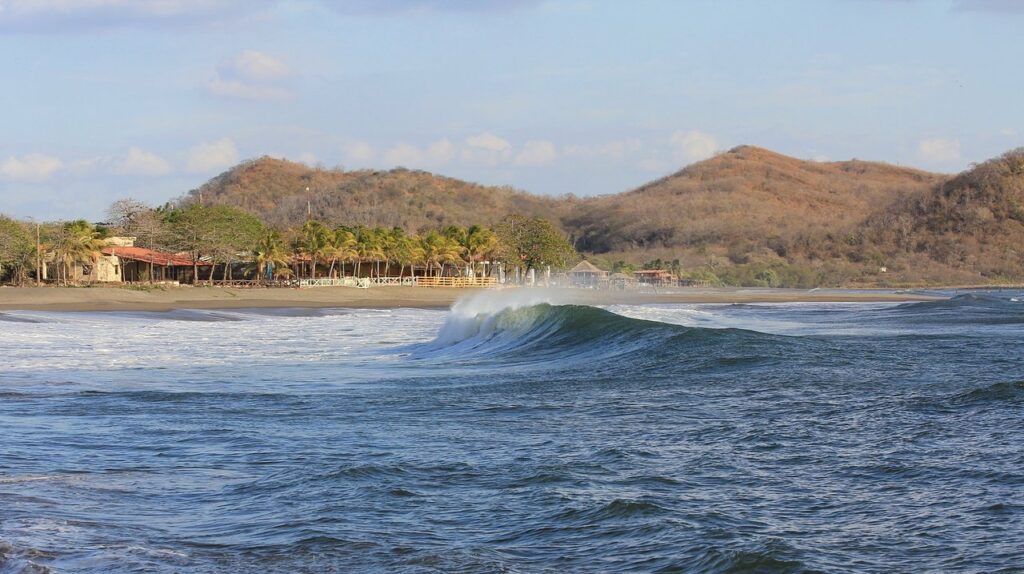
Lastly, your safety matters above all. Always let someone know where you’re fishing, watch the tides, and be mindful of the weather conditions. So, pack your gear, respect the environment, and prepare to enjoy one of the most rewarding experiences Nicaragua has to offer.
As always, stay safe, enjoy the journey and please try to leave the beautiful beaches of Nicaragua cleaner than you found them. If you have any comments, questions, ideas, or suggestions please leave them in the comment section below and I’ll get back to you ASAP. You can follow us on Facebook: Rex The Beach Angler, Instagram: thebeachangler7, Twitter: @AnglerBeach, and YouTube: Man Art Creations.
Check Out More Surf Fishing Destinations
- 7 Tips for Fishing Gulf Of Mexico Nearshore Rigs In Texas
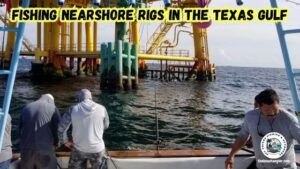
- Fishing The Florida Everglades

- San Diego California Sportfishing Adventures
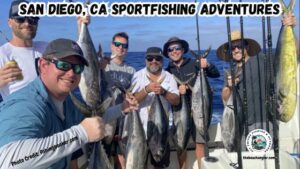
- 12 Top Saltwater Fishing Spots On The Outer Banks
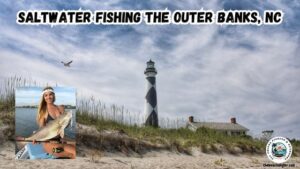
- 4 of the Best Saltwater Fishing Spots For Beginners
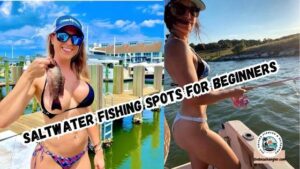
- Top 10 Saltwater Fishing Spots Around The World
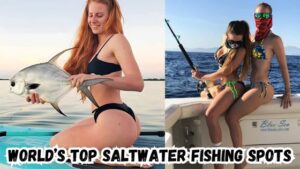
P.S. – Thanks so much for checking out our blog we really appreciate it. Just so you know, we may receive a commission if you click on some of the links that appear on our site. This helps us keep our content free and up-to-date for everyone. We appreciate your support!
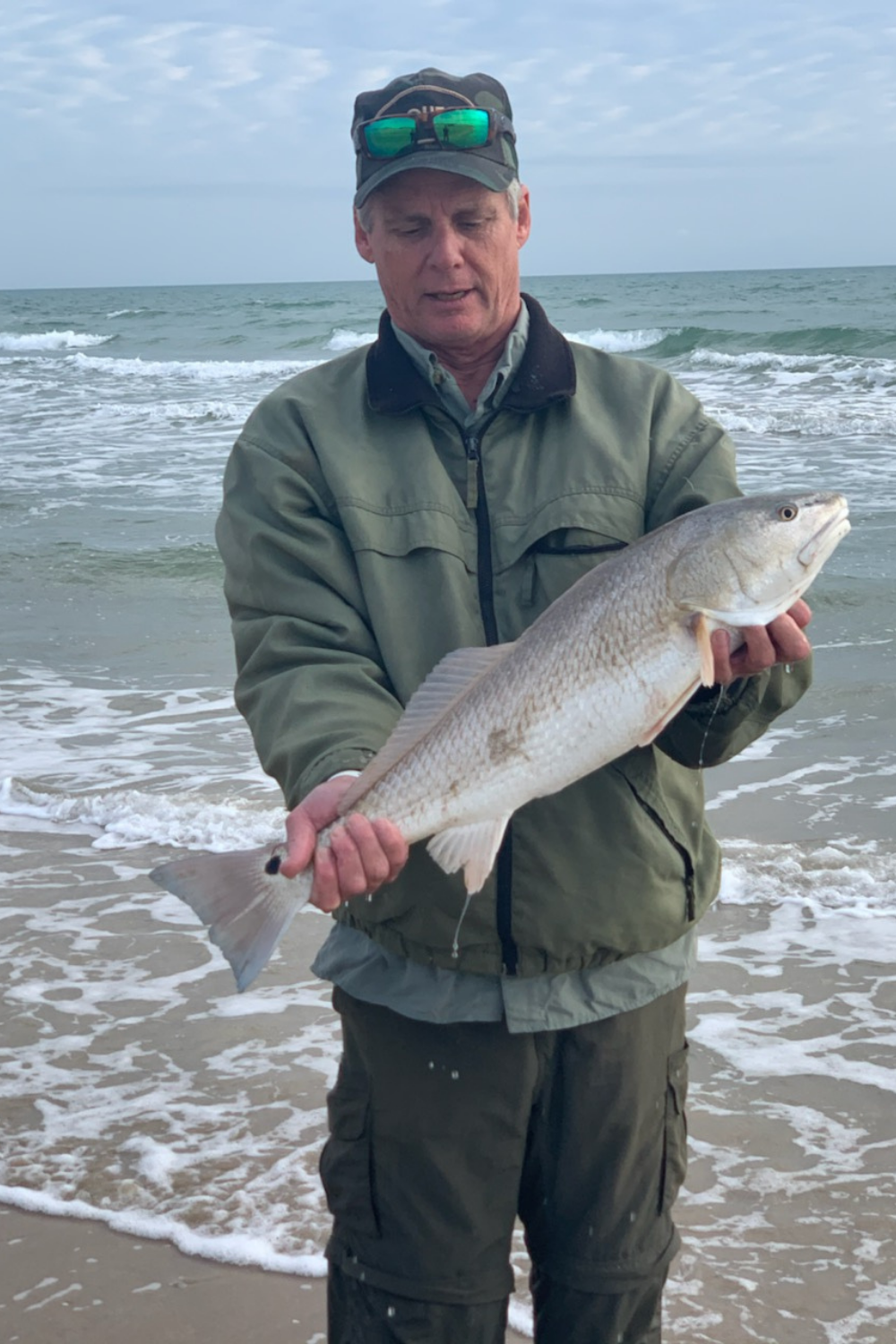
A life long surf fisherman with 50+ years of experience, I am also an avid hunter and outdoorsman. I will be sharing my passion for the outdoors with you so be prepared for hunting, fishing, camping, hiking and more. Along with gear reviews and the latest trends and innovations in the outdoor industry.
